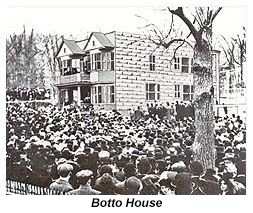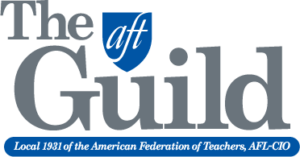April 02, 2018
April 02
The Union Label Trades Department is chartered by the American Federation of Labor. Its mission: promote the products and services produced in America by union members, especially those products identified by a union label, shop card, store card, and service button – 1909
The Supreme Court declares unconstitutional a 1918 Washington, D.C., law establishing a minimum wage for women – 1923
Major league baseball players end a 232-day strike, which began the prior August 12 and led to the cancellation of the 1994 postseason and the World Series – 1995
April 03
 Some 20,000 textile mill strikers in Paterson, N.J., gather on the green in front of the house of Pietro Botto, the socialist mayor of nearby Haledon, to receive encouragement by novelist Upton Sinclair, journalist John Reed and speakers from the Wobblies. Today, the Botto House is home to the American Labor Museum – 1913
Some 20,000 textile mill strikers in Paterson, N.J., gather on the green in front of the house of Pietro Botto, the socialist mayor of nearby Haledon, to receive encouragement by novelist Upton Sinclair, journalist John Reed and speakers from the Wobblies. Today, the Botto House is home to the American Labor Museum – 1913
UAW Local 833 strikes the Kohler bathroom fixtures company in Kohler, Wisc. The strike ends six years later after Kohler is found guilty of refusing to bargain, agrees to reinstate 1,400 strikers and pay them $4.5 million in back pay and pension credits – 1954
Martin Luther King Jr. returns to Memphis to stand with striking AFSCME sanitation workers. This evening, he delivers his famous “I’ve Been to the Mountaintop” speech in a church packed with union members and others. He is assassinated the following day – 1968
April 04
 The first issue of The Labor Review, a “weekly magazine for organized workers,” was published in Minneapolis. Edna George, a cigar packer in Minneapolis, won $10 in gold for suggesting the name “Labor Review.” The Labor Review has been published continuously since then, currently as a monthly publication – 1907
The first issue of The Labor Review, a “weekly magazine for organized workers,” was published in Minneapolis. Edna George, a cigar packer in Minneapolis, won $10 in gold for suggesting the name “Labor Review.” The Labor Review has been published continuously since then, currently as a monthly publication – 1907
Unemployed riot in New York City’s Union Square – 1914
 Martin Luther King Jr. is assassinated in Memphis, where he had been supporting a sanitation workers’ strike. In the wake of this tragedy, riots break out in many cities, including Washington, D.C. – 1968
Martin Luther King Jr. is assassinated in Memphis, where he had been supporting a sanitation workers’ strike. In the wake of this tragedy, riots break out in many cities, including Washington, D.C. – 1968
Some 1,700 United Mine Workers members in Virginia and West Virginia beat back concessions demanded by Pittston Coal Co. – 1989
April 05
Columnist Victor Riesel, a crusader against mob infiltration of unions, was blinded in New York City when an assailant threw sulfuric acid in his face. He was also an FBI informer for decades, a proponent of the McCarthy era blacklisting that weakened unions for over a generation, and a crusader against unions connecting with anti-war student activism in the 1960’s and 70’s – 1956
 Some 14,000 teachers strike Hawaii schools, colleges – 2001
Some 14,000 teachers strike Hawaii schools, colleges – 2001
A huge underground explosion at the Upper Big Branch Mine in Montcoal, W. Va., kills 29 miners. It was the worst U.S. mine disaster in 40 years. The Massey Energy Co. mine had been cited for two safety infractions the day before the blast; 57 the month before, and 1,342 in the previous five years. Three and one-half years after the disaster Massey’s then-CEO, Don Blankenship, was indicted by a federal grand jury on four criminal counts – 2010
April 06
The first slave revolt in the U.S. occurs at a slave market in New York City’s Wall Street area. Twenty-one Blacks were executed for killing nine Whites. The city responded by strengthening its slave codes – 1712
 Birth of Rose Schneiderman, prominent member of the New York Women’s Trade Union League, an active participant in the Uprising of the 20,000, the massive strike of shirtwaist workers in New York City led by the Int’l Ladies Garment Workers’ Union in 1909, and famous for an angry speech about the 1911 Triangle Shirtwaist Factory fire: “Every week I must learn of the untimely death of one of my sister workers…Too much blood has been spilled. I know from my experience it is up to the working people to save themselves. The only way they can save themselves is by a strong working-class movement” – 1882
Birth of Rose Schneiderman, prominent member of the New York Women’s Trade Union League, an active participant in the Uprising of the 20,000, the massive strike of shirtwaist workers in New York City led by the Int’l Ladies Garment Workers’ Union in 1909, and famous for an angry speech about the 1911 Triangle Shirtwaist Factory fire: “Every week I must learn of the untimely death of one of my sister workers…Too much blood has been spilled. I know from my experience it is up to the working people to save themselves. The only way they can save themselves is by a strong working-class movement” – 1882
A sympathy strike by Chicago Teamsters in support of clothing workers leads to daily clashes between strikebreakers and armed police against hundreds and sometimes thousands of striking workers and their supporters. By the time the fight ended after 103 days, 21 people had been killed and 416 injured – 1905
What was to become a two-month strike by minor league umpires begins, largely over money: $5,500 to $15,000 for a season running 142 games. The strike ended with a slight improvement in pay – 2006
April 07
National Labor Relations Board attorney tells ILWU members to “lie down like good dogs,” Juneau, Alaska – 1947
 Some 300,000 members of the National Federation of Telephone Workers, soon to become CWA, strike AT&T and the Bell System. Within five weeks all but two of the 39 federation unions had won new contracts – 1947
Some 300,000 members of the National Federation of Telephone Workers, soon to become CWA, strike AT&T and the Bell System. Within five weeks all but two of the 39 federation unions had won new contracts – 1947
Fifteen thousand union janitors strike, Los Angeles – 2000
April 08
A total of 128 convict miners, leased to a coal company under the state’s shameful convict lease system, are killed in an explosion at the Banner coal mine outside Birmingham, Ala. The miners were mostly African-Americans jailed for minor offenses – 1911
President Wilson establishes the War Labor Board, composed of representatives from business and labor, to arbitrate disputes between workers and employers during World War I – 1918
The Works Progress Administration (WPA) is approved by Congress. President Franklin Roosevelt proposed the WPA during the Great Depression of the 1930s when almost 25 percent of Americans were unemployed. It created low-paying federal jobs providing immediate relief, putting 8.5 million jobless to work on projects ranging from construction of bridges, highways and public buildings to arts programs like the Federal Writers’ Project – 1935
 (Agitate! Educate! Organize! American Labor Posters: WPA artists’ depictions of workers can be seen in labor posters of that era. In Agitate! Educate! Organize!, Lincoln Cushing and Timothy W. Drescher share their vast knowledge about the rich graphic tradition of labor posters. Here you will find lavish full-color reproductions of more than 250 of the best posters that have emerged from the American labor movement on topics ranging from core issues such as wages and working conditions to discrimination to international solidarity.)
(Agitate! Educate! Organize! American Labor Posters: WPA artists’ depictions of workers can be seen in labor posters of that era. In Agitate! Educate! Organize!, Lincoln Cushing and Timothy W. Drescher share their vast knowledge about the rich graphic tradition of labor posters. Here you will find lavish full-color reproductions of more than 250 of the best posters that have emerged from the American labor movement on topics ranging from core issues such as wages and working conditions to discrimination to international solidarity.)
President Harry S. Truman orders the U.S. Army to seize the nation’s steel mills to avert a strike. The Supreme Court ruled the act illegal three weeks later – 1952
